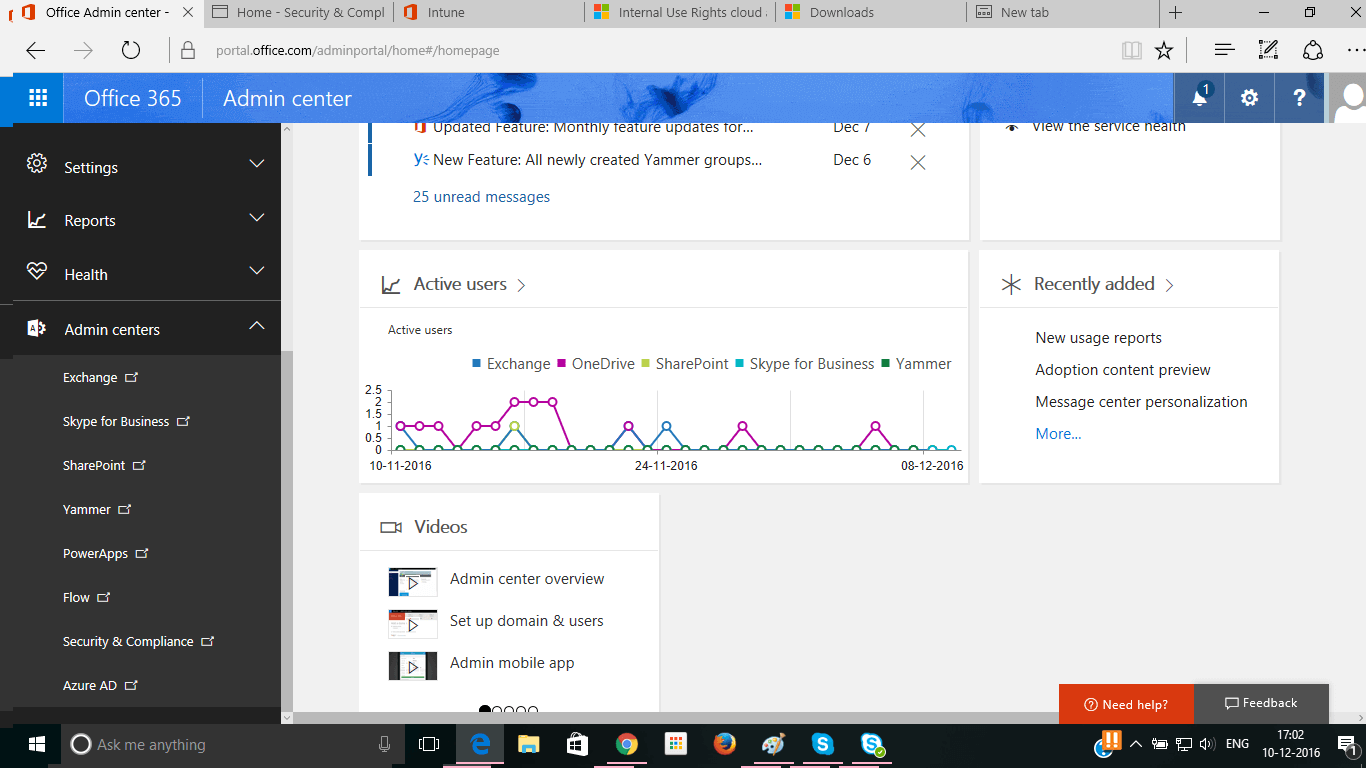

- #Microsoft 365 admin center how to#
- #Microsoft 365 admin center update#
- #Microsoft 365 admin center series#

#Microsoft 365 admin center update#
Administrators can set a password policy and password change period, add and update business Domain names where appropriate, edit business profiles and preferences, and control outside entities - such as business partners or third-party service providers - with permission to access the Microsoft Office 365 Admin Center. The Settings section lets administrators implement global settings for Office 365 applications, such as the Microsoft Office applications and email. Administrators can view billing statements and audit the licenses assigned to users. The Billing menu allows administrators to purchase new subscriptions, view current subscriptions and cancel subscriptions. Administrators can make these collections available to selected users or groups. Collections are typically business assets - files, media and sites - that are organized to share navigation, permissions and other Office 365 settings. The Groups menu lets administrators create, organize, manage and delete groups of Office 365 users, such as business groups, shared mailboxes, distribution lists, security groups, teams and so on.Īdministrators use the Resources section to create and manage resources, such as SharePoint site collections. This area allows administrators to set permissions, edit user details and reset passwords. The Users section allows administrators to create, delete and manage users. The Microsoft Office 365 Admin Center sections Administrators can select, arrange and modify these tiles to suit their preference.
#Microsoft 365 admin center series#
An administrator can choose to present more commonly used areas as a series of tiles within the homepage of the Microsoft Office 365 Admin Center. Each management section appears in the portal's left menu. The Microsoft Office 365 Admin Center portal supports management tasks for users, groups, resources, billing, support, settings, reports and health. Any user can be assigned as an administrator, but the management in a business environment is typically handled by traditional Exchange administrators.Īdministrators access the Microsoft Office 365 Admin Center through a web browser with their administrative credentials. Microsoft Office 365 Admin Center is the principal management interface for Microsoft's Office 365 services. The Microsoft Office 365 Admin Center is the web-based portal administrators use to manage user accounts and configuration settings for the Office 365 subscription services, including Exchange Online and SharePoint Online. However, when you select a particular day (see number 3), up to 28 days from the current date, the report show the user's usage for that day in the User Details table (see number 2). That user will still be included in the Activity chart totals (see number 1) for the periods she was active in, but will not appear in the User Details table (see number 2). Whenever you close a user's account, Microsoft will delete that user's usage data within 30 days. What happens to usage data when a user account is closed? This setting also applies to the reports API. It'll take a few minutes for these changes to take effect on the reports in the reports dashboard. In the Reports pane, select the options you want, and then save your changes.

In the admin center, go to the Settings > Services & add-ins page. If you want to hide user level information when you're generating your reports, you can quickly make that change in the admin center. You can't generate a report where you enter a user's account and then get a list which services they are using and how much.

If you have thousands of users, export the report to Excel so you filter through the list quickly. For example, to find out how much mailbox storage a specific user has consumed, open the Mailbox usage report, and sort the users by name. Use the service reports to research how much a specific user is using the service.
#Microsoft 365 admin center how to#
How to view usage information for a specific user To see who is licensed, unlicensed, or guest, in the admin center, go to the Users > Active users page. To see how many licenses you have assigned and unassigned, in the admin center, go to the Billing > Licenses page. Skype for Business Online peer-to-peer activity Skype for Business Online conference participant activity Skype for Business Online conference organized activity Which activity reports are available in the admin centerĭepending on your subscription, here are the available reports. Global admins: We recommend that only a few people in your company have this role. People who have the following permissions: Or, select an at-a-glance activity widget for a service (email, OneDrive, etc) to see more information.


 0 kommentar(er)
0 kommentar(er)
